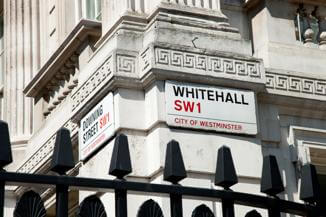Facts
Mr Temperton presented a claim at the Employment Tribunals on 23 November 2022. He brought claims of protected disclosure detriment and failure to make reasonable adjustments. He then presented a second claim form, in which he made the same claims and added an unfair dismissal claim. Mr Temperton’s claims arose during his agency shift at Greater Manchester Mental Health Foundation Trust’s (GMMH) Atherleigh Park Hospital. Mr Temperton’s claim of unfair dismissal was withdrawn during the proceedings. Mr Temperton’s claim of disability discrimination failed.
The alleged protected disclosures relied on for the whistleblower claim were in relation to putting a patient in seclusion due to staffing issues which was in breach of the Code of Practice which GMMH was required to observe. Mr Temperton subsequently raised the issue with the nurse in charge and with a locum consultant psychiatrist, but the patient was nonetheless kept in seclusion.
According to the Mental Health Act’s Code of Practice, seclusion “should not be used as a punishment or a threat, or because of a shortage of staff”.
Mr Temperton asserted the following detriments
- Cancelling his future shifts;
- Failing to conduct an interview arranged by GMMH at a different hospital. Mr Temperton later withdrew this allegation; and
- Being sent away from Priestners Ward to Golborne Ward.
Issues which the Tribunal had to consider
The first issue for the Tribunal to determine was whether Mr Temperton had made any protected disclosures.
Disclosures
Disclosure to the nurse
The Tribunal was satisfied that this disclosure was a disclosure to the employer. The Tribunal agreed that Mr Temperton’s belief was a reasonable one and that this disclosure tended to show that GMMH had failed to comply with a legal obligation, and that it was in the public interest to make. The Tribunal accordingly found that this disclosure was a protected disclosure.
Disclosure to the locum
In terms of whether it was made to the employer, whilst the locum was not the “employer”, he was in a senior position, and the Tribunal was satisfied that this was a disclosure to the employer. As the same information was conveyed to the locum, the Tribunal was equally satisfied that Mr Temperton reasonably believed that it tended to show that GMMH had failed to comply with a legal obligation, and that it was in the public interest to make it. This too, therefore, was a protected disclosure.
Disclosure to the recruitment agency
The Tribunal was not satisfied that this was a protected disclosure, given he only referred to his “concerns” in the email and the Tribunal had no details of any discussions.
Disclosure to the CQC
The Tribunal was satisfied that Mr Temperton conveyed the information set out in the CQC’s email. The Tribunal was also satisfied that Mr Temperton had the necessary reasonable belief in the substantial truth of that information because the first piece of that information is what he had been told and the second was clearly correct, as the Code of Practice clearly states that this would be a breach.
The Tribunal was accordingly satisfied that this disclosure too was a protected disclosure.
Detriment
Having determined that Mr Temperton made protected disclosures, the next issue was whether he was subjected to any detriment for having done so.
Detriment 1
In determining whether Mr Temperton was subjected to this detriment on the ground that he had made a protected disclosure, the Tribunal had regard to who took the decision complained of in relation to sending Mr Temperton from Priestner Ward to Golborne Ward, and what had to be shown to establish the causal link between the making of the disclosure and the detriment. Of importance was who did not make that decision.
As there was no evidence that the decision maker was aware that Mr Temperton had made any disclosure, the Tribunal concluded that could not have been a factor for them. If it was not her decision, but someone else’s, and given it was none of the other three persons who knew of the disclosures or to whom they related, then there could be no causal connection between the disclosure and this detriment. The complaint accordingly failed.
Detriment 2
In relation to the cancellation of the shifts by the individual who Mr Temperton had complained about, the Tribunal held that inferences had to be drawn that the individual was aware. The Tribunal considered that the individual was likely to have been sufficiently aware of the substance, in part, of Mr Temperton’s disclosures and the complaint was upheld.
Comment
For whistleblowing detriment claims, the focus should be on why the decision-maker acted as they did. This case clarifies that, for an employer to be liable in a whistleblowing detriment claim, a decision-maker must have some knowledge of the detail of the employee's protected disclosure. It is not sufficient that a protected disclosure has been made to someone within the organisation and the decision-maker is aware of that fact. This makes sense from a causation perspective as it is difficult to see how a decision can be made on the ground of a protected disclosure, when the decision-maker has no knowledge of the detail of the protected disclosure.
In addition, this case is a useful reminder that disclosures, need not necessarily only be made to one’s employer, but can be made to someone sufficiently senior working at an employer or at a regulatory body.
Employers should proceed cautiously when someone has made a protected, both in terms of following their whistleblowing policies and upholding their legal obligations, to protect whistleblowers from detriment and/or unfair dismissal.










































